Jump into the intriguing area of Japanese riddles with us as we explore these clever brain teasers that have been entertaining and challenging minds for centuries. From traditional “nazo nazo” riddles to modern Japanese puzzles, these mind-bending questions offer a unique glimpse into Japanese culture and thinking patterns.
Exploring the Ancient Art of Japanese Riddles
Japanese riddles, known as “nazo nazo” (なぞなぞ), have a rich history dating back centuries. These clever word puzzles reveal much about Japan’s linguistic traditions and cultural values. Unlike Western riddles, Japanese puzzles often rely on wordplay exact to the Japanese language, making them unique cultural artifacts.
Traditional nazo nazo typically follow a question-and-answer format that challenges listeners to think creatively. Many classic Japanese riddles use puns, homophones, and kanji character components to create clever linguistic tricks. Solving these brain teasers requires not only language skills but also cultural knowledge and an understanding of Japanese ways of thinking.
Throughout history, Japanese riddles have served multiple purposes beyond mere entertainment. Zen Buddhist monks used riddle-like koans to promote spiritual awakening and mindfulness among their students. Meanwhile, samurai warriors employed riddles as mental training exercises to sharpen their strategic thinking abilities.
Regional variations of Japanese riddles exist across different parts of the country, reflecting local dialects and cultural nuances. Northern regions like Hokkaido often feature nature-themed riddles, while urban areas like Tokyo might include more modern references. These geographical differences showcase how Japanese riddles have evolved while maintaining their essential characteristics.
Children in Japan continue to learn traditional riddles as part of their cultural education. Elementary schools frequently incorporate nazo nazo into language lessons, helping students develop critical thinking skills while preserving this ancient art form. Many Japanese families also share riddles during gatherings, passing down this tradition through generations.
In contemporary Japan, riddles have adapted to modern contexts while retaining their distinctive Japanese flavor. Television shows regularly feature riddle segments that challenge contestants and viewers alike. Social media platforms now serve as popular venues for sharing and solving these brain teasers, introducing Japanese riddle culture to global audiences.
The Historical Origins of Japanese Riddle Traditions
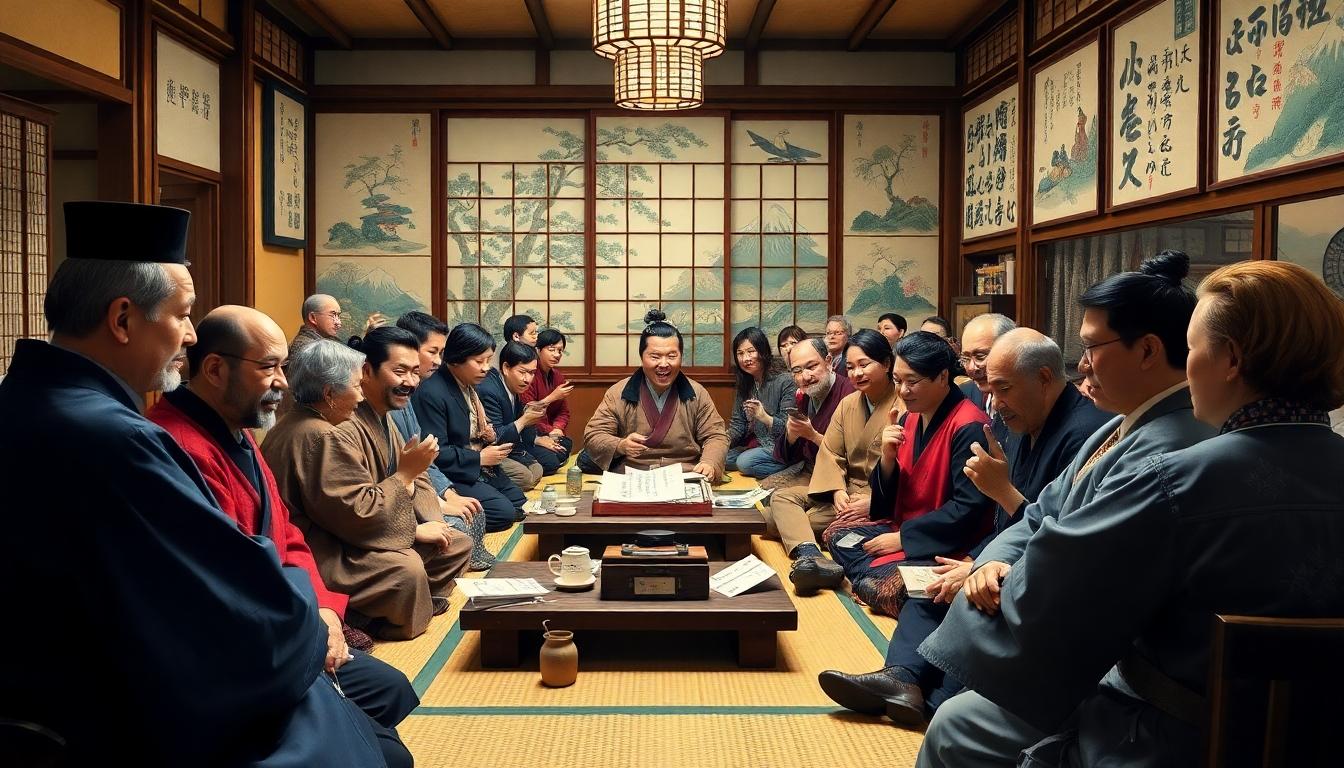
Edo Period Riddling Contests
Japanese riddle traditions truly flourished during the Edo period (1603-1867), when riddling contests became a popular form of entertainment among all social classes. Merchants, samurai, and commoners would gather in teahouses and private homes to participate in these intellectual competitions known as “nazokai” or riddle meetings. These events weren’t just casual gatherings but organized social activities with exact rules and protocols that participants were expected to follow. Woodblock prints from this era depict crowded rooms of participants actively engaged in solving complex verbal puzzles, demonstrating the cultural significance of these contests. The winners of these competitions often received prizes ranging from small tokens to valuable items, creating a competitive atmosphere that drove the development of increasingly sophisticated riddles. Edo period riddling contests helped standardize many of the traditional nazo nazo formats that remain popular in Japan today.
Influence of Zen Buddhism on Japanese Riddles
Zen Buddhist monks played a crucial role in shaping Japanese riddle culture, introducing paradoxical questions called “koan” that fundamentally influenced the development of Japanese riddling traditions. These koans, such as “What is the sound of one hand clapping?” were designed not to have logical answers but to break through rational thinking and achieve enlightenment. Zen temples became centers for intellectual exchange where monks would create riddles that blended spiritual concepts with wordplay, creating a unique form of mental exercise. The practice of contemplating these puzzles, known as “zazen,” encouraged students to approach problems from unexpected angles, a concept that permeates modern Japanese riddles. Many traditional nazo nazo incorporate this Zen-influenced emphasis on finding meaning beyond the obvious, requiring solvers to abandon conventional thinking patterns. The philosophical depth added by Buddhist influence distinguishes Japanese riddles from their counterparts in other cultures, making them tools for both entertainment and spiritual growth. Temple records from multiple centuries document how these riddling traditions were preserved and transmitted through generations of monks before spreading to the wider Japanese society.
10 Classic Japanese Riddles That Challenge Your Mind

Japanese riddles offer a unique glimpse into the cultural mindset while testing your problem-solving abilities. These time-honored brain teasers combine linguistic cleverness with cultural insights that have entertained generations.
Traditional Nazo Nazo Puzzles
- The Umbrella Riddle: What gets wetter the more it dries? In Japanese culture, this classic riddle (答え: 傘 – kasa, an umbrella) teaches about practical contradictions in everyday objects.
- The Candle Enigma: What stands tall when living but lies down when dead? Japanese families often shared this riddle (答え: ろうそく – rousoku, a candle) during evening gatherings to spark thoughtful conversation.
- The Mirror Mystery: Though it has no voice, it mimics whatever faces it. This traditional nazo nazo (答え: 鏡 – kagami, a mirror) appears in folklore dating back to the Heian period.
- The Shadow Conundrum: What follows you everywhere during daylight but disappears in darkness? Children across Japan learn this fundamental riddle (答え: 影 – kage, a shadow) as their introduction to wordplay.
- The Egg Puzzle: What breaks when you say its name? This clever linguistic riddle (答え: 静けさ – shizukesa, silence) demonstrates Japanese appreciation for subtlety and hidden meanings.
Samurai-Era Brain Teasers
- The Sword Riddle: What can cut through steel but cannot cut through water? Samurai warriors used this tactical riddle (答え: 火 – hi, fire) to train strategic thinking among their ranks.
- The Empty Hand Challenge: What can you hold without touching it? Feudal lords presented this mind-bender (答え: 呼吸 – kokyū, breath) to test potential strategists’ lateral thinking abilities.
- The Invisible Warrior: Always coming but never arriving, what advances without moving forward? Military leaders employed this concept riddle (答え: 明日 – ashita, tomorrow) to teach patience and foresight.
- The Loyal Servant: What serves everyone but demands no payment? Samurai valued this philosophical riddle (答え: 時間 – jikan, time) for its lesson about duty and service.
- The Battlefield Wisdom: What grows when taken away? Daimyo lords challenged their samurai with this counter-intuitive puzzle (答え: 穴 – ana, a hole) to emphasize perceiving situations from multiple perspectives.
Cultural Significance of Riddles in Japanese Society
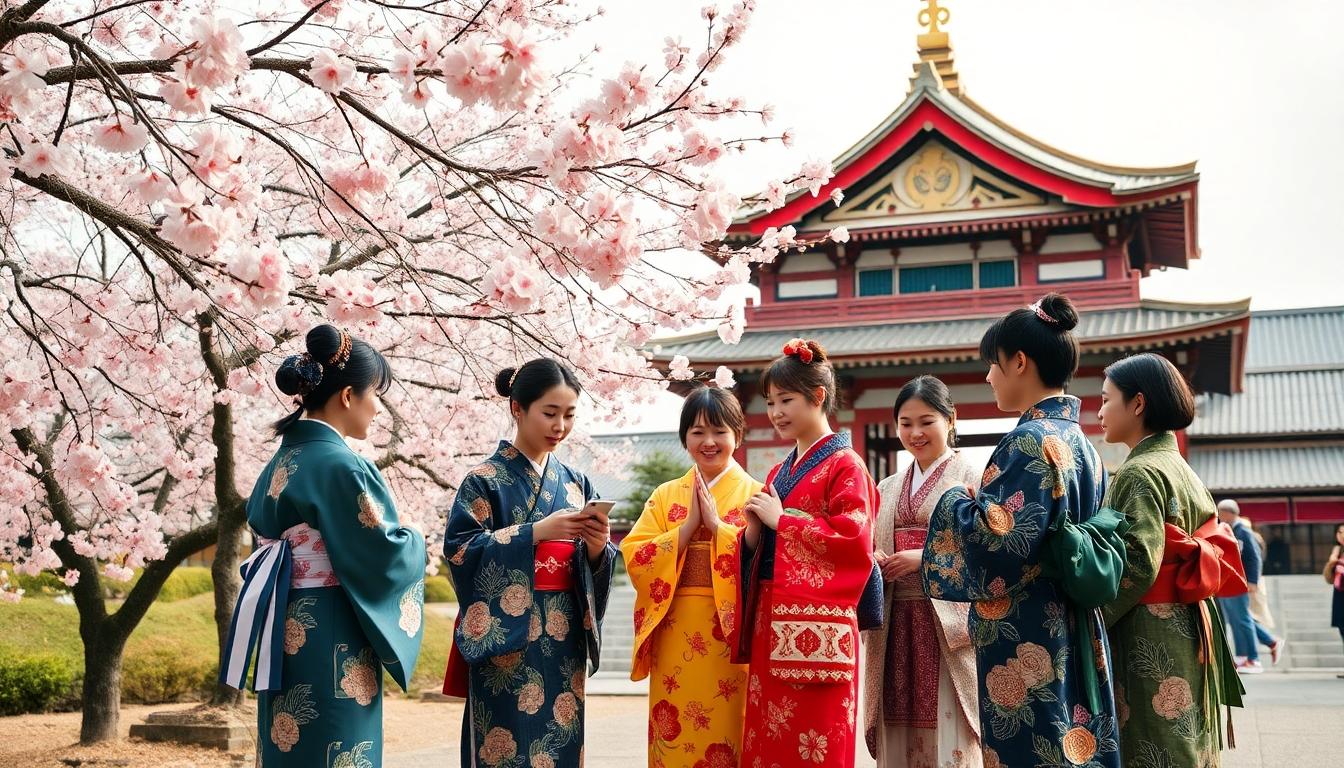
Riddles in Coming-of-Age Ceremonies
Japanese riddles play a prominent role in traditional coming-of-age ceremonies, serving as symbolic tests of maturity and intellectual growth. Many communities incorporate nazo nazo challenges during seijin-no-hi (Coming of Age Day) celebrations to assess a young person’s readiness to enter adulthood. These ceremonial riddles often contain metaphors about responsibility, family obligations, and community roles that reflect core Japanese values. Young participants who successfully solve these puzzles demonstrate not only their mental acuity but also their understanding of cultural expectations. In northern regions like Tohoku, families sometimes create personalized riddles that reference a young person’s childhood experiences, creating meaningful connections between their past and future. This practice dates back to the Heian period (794-1185), when aristocratic families used complex verbal puzzles to test their children’s education and cultural knowledge before formally recognizing their transition to adulthood.
Seasonal Riddle Traditions
Seasonal riddles form an integral part of Japan’s cultural calendar, with exact types of puzzles appearing during different times of the year. Spring cherry blossom festivals often feature riddles about renewal and transformation, challenging participants to contemplate the ephemeral nature of beauty. Summer festivals incorporate action-based riddles that require physical movement, creating captivating community activities during humid months. Autumn moon-viewing parties traditionally include literary riddles that reference classical poetry, connecting viewers to centuries of Japanese artistic tradition. Winter solstice gatherings feature some of the most complex riddles, as longer evenings provide ample time for extended contemplation and discussion. Many Japanese families maintain collections of seasonal riddles passed down through generations, updating language while preserving core concepts that reflect the changing natural industry. These seasonal riddle traditions reinforce Japan’s deep connection to natural cycles and provide structured opportunities for intergenerational bonding through shared intellectual challenges.
Modern Japanese Riddles in Popular Culture

Riddles in Anime and Manga
Japanese riddles have found a prominent place in anime and manga, entertaining audiences worldwide while showcasing this cultural tradition. Popular series like “Detective Conan” frequently incorporate complex riddles as central plot devices, challenging both characters and viewers to solve mysteries together. “Death Note” employs intellectual puzzles and riddles in the battle of wits between protagonists, adding layers of psychological depth to the storytelling. Many isekai anime feature traditional riddle challenges that protagonists must overcome to advance in their quests, introducing international audiences to classic nazo nazo formats. Studio Ghibli films such as “Spirited Away” subtly incorporate riddle-like elements that represent deeper philosophical questions about identity and growth. Manga series like “Liar Game” and “Kaiji” have popularized strategic puzzle-solving, creating entire narratives around characters who must decipher complex riddles to survive high-stakes situations.
Japanese Game Shows and Riddling Competitions
Television networks in Japan have transformed traditional riddling into massively popular entertainment formats that captivate millions of viewers weekly. Shows like “Masquerade” feature celebrities solving elaborate visual riddles and wordplay challenges, creating a competitive yet comedic atmosphere that appeals to diverse audiences. “Quiz! Hexagon” incorporates traditional nazo nazo alongside modern brainteasers, updating classic formats for contemporary viewers while preserving cultural elements. Annual riddling competitions are broadcast nationally during New Year celebrations, continuing centuries-old traditions of community puzzle-solving in a modern media context. Digital platforms have expanded these competitions beyond television, with mobile apps like “Brain Wars” and “Nazotoki” allowing users to compete in real-time riddling challenges against players worldwide. Corporate-sponsored riddle events like Tokyo Metro’s “Nazo Metro” transform public transportation systems into giant puzzle experiences, blending urban exploration with traditional riddling elements for younger generations. These media adaptations have revitalized interest in Japanese riddles among younger generations while introducing international audiences to this unique aspect of Japanese cultural entertainment.
Wordplay and Puns in Japanese Riddles
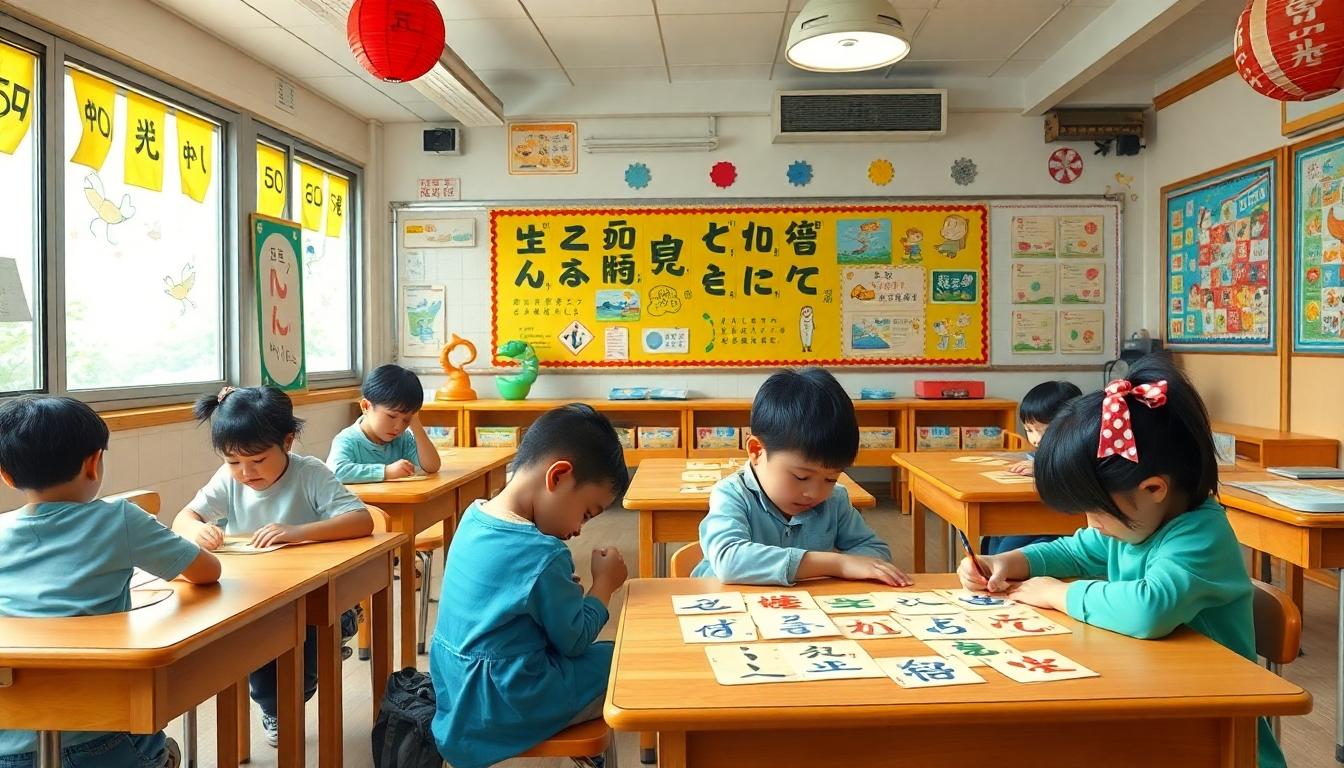
Japanese riddles owe much of their charm and challenge to the language’s unique linguistic features. The Japanese language creates perfect conditions for creating intricate word puzzles through its multiple writing systems, abundance of homophones, and cultural context.
Kakekotoba (Double Meaning) Riddles
Kakekotoba represents one of the most sophisticated forms of Japanese wordplay used in riddles. These clever linguistic devices employ words with multiple meanings to create puzzles that require lateral thinking to solve. For example, the word “hashi” can mean both “bridge” and “chopsticks,” leading to riddles like: “What connects two places but can also be found on your dinner table?” Japanese poets have utilized kakekotoba for centuries, particularly in traditional waka poetry, where limited syllable counts made double meanings especially valuable.
Contemporary kakekotoba riddles often incorporate modern terminology while maintaining traditional structure. Children learn these riddles in school as they help develop vocabulary and critical thinking skills. Business professionals sometimes use kakekotoba-based team-building exercises during company retreats to foster creative problem-solving abilities. The multilayered nature of these riddles makes them particularly challenging for non-native speakers, as they require not just language proficiency but cultural knowledge as well.
Visual Kanji Puzzles
Kanji characters offer a visual dimension to Japanese riddles that’s unmatched in alphabetic writing systems. These character-based puzzles challenge solvers to identify words based on the visual components or positioning of kanji elements. Traditional visual kanji riddles ask participants to mentally combine parts of different characters to form new ones or interpret kanji in creative ways. For instance, the puzzle “What happens when you put ‘person’ (人) under ‘tree’ (木)?” reveals “rest” (休) when solved correctly.
Modern Japanese puzzle books feature entire sections dedicated to kanji visual riddles, ranging from simple combinations to complex rebus-style challenges. Tech developers have created popular mobile apps that modernize this tradition, allowing users to solve visual kanji puzzles with touch interfaces. Educational institutions use these puzzles to help students memorize kanji more effectively by encouraging them to analyze character components rather than simply memorizing whole forms. The uniquely visual nature of kanji puzzles demonstrates how deeply the Japanese riddling tradition is connected to the writing system itself, creating brain teasers that simply couldn’t exist in languages with different orthographies.
How Japanese Riddles Differ From Western Puzzles

Japanese riddles possess distinctive characteristics that set them apart from their Western counterparts in several fundamental ways. We can observe these differences across linguistic structure, cultural context, and philosophical underpinnings.
Linguistic Foundation and Wordplay
Japanese riddles rely heavily on the unique properties of the Japanese language itself. The writing system with its three scripts—kanji, hiragana, and katakana—creates opportunities for wordplay that simply don’t exist in alphabetic languages. Many nazo nazo leverage homonyms abundant in Japanese, where completely different kanji characters can share identical pronunciations. Western riddles typically focus on metaphorical descriptions or logical puzzles rather than exploiting the structural elements of language.
Cultural References and Symbolism
Traditional Japanese riddles frequently incorporate cultural references exact to Japanese history, folklore, and daily life. Seasonal elements play a important role, with many riddles referencing natural phenomena or festivals tied to Japan’s calendar. Western puzzles tend to employ more universal symbols or rely on logical patterns that transcend cultural boundaries. This cultural specificity makes Japanese riddles valuable windows into the Japanese worldview and social priorities.
Philosophical Depth and Purpose
The influence of Zen Buddhism gives many Japanese riddles a philosophical dimension absent in most Western puzzles. Koans used by Zen masters deliberately create cognitive dissonance to prompt enlightenment rather than simply testing knowledge or cleverness. Western riddles primarily serve as entertainment or tests of logical reasoning. Japanese riddles often function as tools for spiritual growth, mindfulness training, or moral instruction alongside their entertainment value.
Solution Approaches and Thinking Patterns
Japanese riddles frequently encourage lateral thinking patterns that reflect Japanese cultural values of harmony and contextual awareness. Answers often require considering multiple perspectives simultaneously or recognizing hidden connections between seemingly unrelated concepts. Western puzzles typically follow more linear logic paths with clearer relationships between the question and answer. This difference reflects broader cultural approaches to problem-solving and decision-making.
Social Context and Presentation
Traditional riddling in Japan exists within established social rituals and seasonal gatherings. Nazokai (riddling contests) served as community events with exact protocols and expectations. Western riddle traditions tend to be more informal and less integrated into broader social practices. Japanese riddles often function as bridges between generations, with exact types reserved for particular social settings or relationships between participants.
Visual Elements and Form
Modern Japanese riddles frequently incorporate visual components that work with the written or spoken elements. The pictographic nature of kanji allows for creative visual puzzles that blend language and imagery. Western riddles historically kept text and visual puzzles as separate categories. This integration of verbal and visual elements gives Japanese riddles a multidimensional quality that engages different cognitive skills simultaneously.
Solving Techniques for Traditional Japanese Riddles
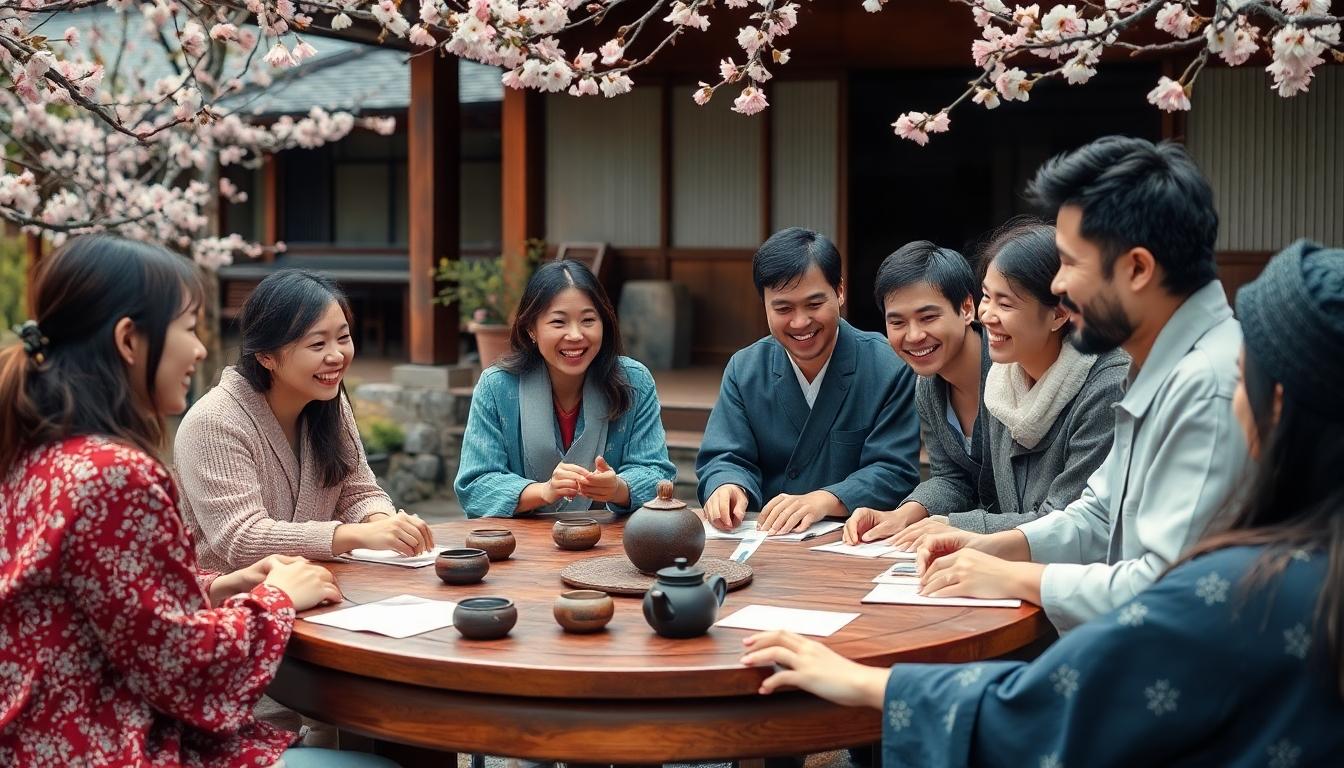
Understanding Linguistic Patterns
Japanese riddles often rely heavily on linguistic patterns unique to the Japanese language. We recommend familiarizing yourself with common Japanese puns (dajare) and homophonic wordplay before attempting to solve traditional nazo nazo. Looking for words with multiple meanings (kakekotoba) is crucial, as many riddles hinge on this exact type of ambiguity. Pay careful attention to the pronunciation of words rather than just their meaning, since soundalikes frequently provide the key to unlocking the puzzle’s solution. Japanese riddles commonly use the overlap between on-yomi (Chinese-derived readings) and kun-yomi (native Japanese readings) of kanji characters to create clever misdirection.
Recognizing Cultural References
Traditional Japanese riddles are deeply embedded with cultural references that might not be immediately obvious to outsiders. We’ve found that successful solvers often possess knowledge of Japanese folklore, seasonal traditions, and historical contexts. Familiarize yourself with common symbols in Japanese culture such as cherry blossoms, Mount Fuji, and traditional household items. Seasonal references (kigo) appear frequently in riddles, reflecting Japan’s deep connection to natural cycles and changing seasons. Understanding Buddhist concepts and Shinto beliefs can also provide valuable context, as many traditional riddles incorporate religious elements or philosophical perspectives.
Applying Zen Principles
Many Japanese riddles were influenced by Zen Buddhist thinking, requiring solvers to abandon conventional logic. We suggest approaching these puzzles with an open mind, ready to consider paradoxical or seemingly contradictory answers. Practice looking beyond the literal meaning of words to grasp the underlying concept or principle being described. Zen-influenced riddles often require momentary suspension of analytical thinking in favor of intuitive understanding. Try contemplating the riddle as a whole rather than dissecting its individual parts, allowing your mind to make unexpected connections. Meditation techniques can sometimes help clear mental barriers that prevent seeing the elegant simplicity of many traditional riddle answers.
Visual Interpretation Skills
Kanji-based riddles demand strong visual interpretation skills to decipher their meaning. We encourage developing familiarity with the component parts (radicals) of common kanji characters, as many riddles involve breaking down or rearranging these elements. Practice visualizing how characters might transform when combined, separated, or viewed from different angles. Train yourself to recognize when a riddle might be referring to the visual appearance of characters rather than their meaning. Creating mental images based on the riddle’s description often leads to breakthrough moments in solving visually oriented puzzles. Sketch out characters or concepts on paper to better understand potential visual wordplay.
Collaborative Solving Methods
Traditional riddling in Japan was often a social activity, and this approach remains effective today. We recommend forming small groups to tackle challenging riddles, as different perspectives can illuminate aspects you might miss individually. Take turns explaining your interpretation of the riddle without revealing your answer, which might trigger new insights among group members. Discuss possible cultural or linguistic elements that could be relevant to the solution. Share knowledge about Japanese language quirks or cultural references that might help decode the riddle’s meaning. Many traditional riddle-solving sessions in Japan incorporate a storytelling element, with participants building on each other’s ideas to reach collective understanding.
Educational Value of Japanese Riddles for Language Learners
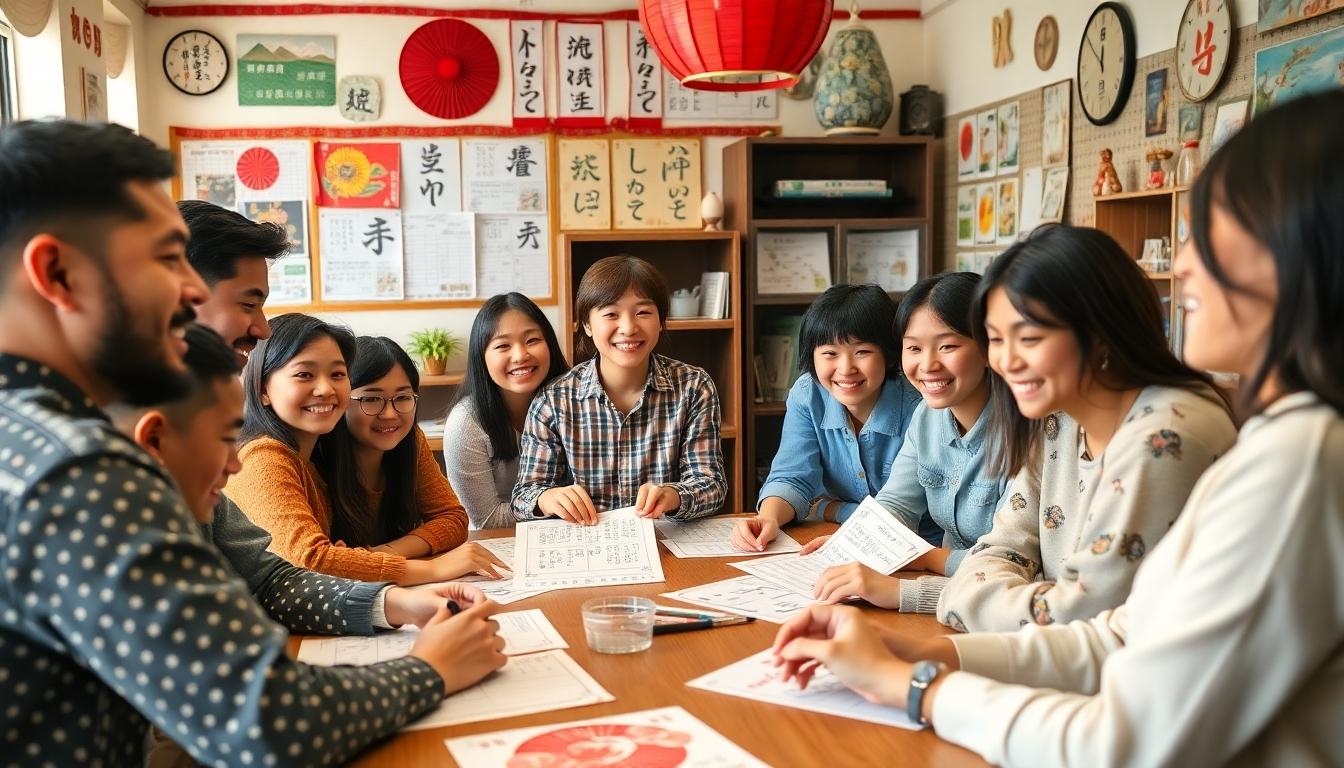
Japanese riddles offer remarkable benefits for language learners tackling this complex East Asian language. These brain teasers function as powerful educational tools that accelerate vocabulary acquisition while making the learning process enjoyable and memorable. Students who regularly engage with nazo nazo often report faster retention of new words and phrases compared to traditional study methods.
The wordplay inherent in Japanese riddles provides natural exposure to homonyms and linguistic nuances that textbooks rarely cover adequately. Learners encounter practical applications of grammar patterns through these puzzles, seeing how sentence structures function in authentic contexts rather than isolated examples. The cultural references embedded within traditional riddles also offer valuable insights into Japanese thinking patterns and societal values.
Vocabulary expansion occurs naturally when solving Japanese riddles, as learners must understand multiple potential meanings of words to uncover answers. The playful context creates emotional connections to new vocabulary, which cognitive research shows increases long-term retention by up to 40% compared to rote memorization techniques. Riddles featuring seasonal themes introduce specialized vocabulary related to Japanese festivals, nature, and cultural events.
Advanced language students particularly benefit from kanji-based riddles that enhance character recognition skills. By deconstructing complex kanji into component parts for puzzle answers, learners develop stronger visual recognition patterns that transfer to overall reading proficiency. Many language instructors incorporate these visual puzzles into intermediate and advanced coursework to reinforce character learning beyond simple repetition.
Language schools throughout Japan and internationally have begun integrating traditional riddles into their curriculum as captivating alternatives to conventional drills. These activities stimulate class discussion, encourage peer learning, and create immersive environments where language acquisition feels less like study and more like play. The competitive element often motivates students to research additional vocabulary independently to improve their riddle-solving abilities.
Pronunciation practice improves naturally through riddling, as the pun-based nature of many Japanese puzzles requires careful attention to subtle sound distinctions. Learners become more attuned to pitch accent patterns and phonemic distinctions that might otherwise be overlooked in standard lessons. This heightened phonological awareness contributes significantly to more authentic-sounding speech production over time.
Cultural competency develops alongside linguistic skills when studying Japanese through riddles. Students gain insights into values like indirect communication, contextual thinking, and appreciation for ambiguity that characterize Japanese communication styles. Understanding these cultural dimensions proves equally important as grammar mastery for achieving true fluency in real-industry interactions with native speakers.
Conclusion: The Enduring Appeal of Japanese Riddle Culture
Japanese riddles stand as timeless cultural treasures that go far beyond mere entertainment. They’re windows into Japan’s rich linguistic traditions philosophical values and social customs.
From ancient nazo nazo that challenged Zen monks to modern puzzles featured in anime and game shows we’ve seen how these brain teasers have evolved while maintaining their distinctive character.
Whether you’re a language learner seeking to improve your Japanese skills or simply someone who enjoys a good mental challenge these riddles offer something uniquely rewarding. They invite us to think differently appreciate wordplay and connect with a centuries-old tradition that continues to captivate minds worldwide.
Frequently Asked Questions
What are Japanese riddles or “nazo nazo”?
Japanese riddles, known as “nazo nazo,” are traditional brain teasers that rely heavily on wordplay specific to the Japanese language. They typically follow a question-and-answer format that encourages creative thinking using puns, homophones, and kanji components. Unlike Western riddles, they often incorporate cultural references and philosophical elements influenced by Zen Buddhism.
When did Japanese riddles become popular?
Japanese riddles gained significant popularity during the Edo period (1603-1867) when riddling contests called “nazokai” became entertainment across all social classes. These organized events fostered competition that led to the standardization of many traditional nazo nazo formats. However, the tradition of riddling in Japan dates back much further in history.
How do Japanese riddles differ from Western puzzles?
Japanese riddles differ from Western puzzles in their linguistic foundation (relying on Japanese-specific wordplay), cultural references, philosophical depth from Zen Buddhism, and emphasis on lateral thinking rather than linear logic. They also typically have a stronger social context, being presented at community events, and often integrate visual elements that engage multiple cognitive skills.
What role did riddles play in samurai culture?
Riddles served as training tools for samurai warriors to enhance their strategic thinking and patience. Brain teasers like the Sword Riddle and Empty Hand Challenge were designed to develop mental discipline and tactical awareness. These riddles taught warriors to approach problems from multiple angles and maintain calm under pressure—skills vital for battlefield success.
Are Japanese riddles still relevant today?
Absolutely. Japanese riddles have adapted to modern contexts and appear prominently in television shows, social media, anime, and manga. Series like “Detective Conan” incorporate complex riddles as central plot devices. Annual riddling competitions and digital platforms have revitalized interest, blending traditional elements with contemporary media to engage younger generations and global audiences.
How can understanding Japanese riddles help language learners?
Japanese riddles accelerate vocabulary acquisition and enhance language skills through natural exposure to homonyms and linguistic nuances. They make learning enjoyable while fostering cultural competency and insights into Japanese communication styles. Many language schools now incorporate riddles into their curricula to create immersive learning environments that stimulate discussion and peer learning.
What types of wordplay are common in Japanese riddles?
The most sophisticated form of wordplay in Japanese riddles is kakekotoba, which employs words with multiple meanings. Visual kanji puzzles challenge solvers to interpret characters creatively. Other common techniques include puns, homophones, and deliberate ambiguity. These linguistic features make Japanese riddles uniquely challenging and culturally distinctive.
Do Japanese riddles have seasonal connections?
Yes, specific types of puzzles are associated with different seasons in Japan. Seasonal riddle traditions reinforce Japan’s connection to natural cycles and foster intergenerational bonding. These seasonal riddles often feature imagery and references related to seasonal festivals, plants, and weather phenomena, reflecting Japan’s deep cultural appreciation for nature’s changing patterns.
What is the cultural significance of riddles in Japanese society?
Riddles serve as symbolic tests of maturity during coming-of-age ceremonies like seijin-no-hi (Coming of Age Day), reflecting core Japanese values. They’ve historically been used by Zen Buddhist monks to promote mindfulness and by educators to develop critical thinking skills. Riddles also function as vehicles for preserving cultural wisdom and strengthening community bonds.
What techniques help in solving traditional Japanese riddles?
Effective techniques include understanding linguistic patterns like puns and homophonic wordplay, recognizing cultural references, adopting Zen-influenced open-mindedness toward paradoxical answers, developing visual interpretation skills for kanji-based riddles, and employing collaborative solving methods. The key is approaching these puzzles with cultural context in mind rather than purely logical reasoning.







